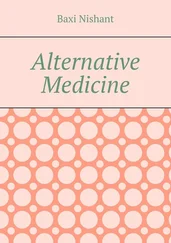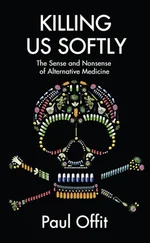Subtle effects of magnetic fields are observable, for instance, on cell cultures. The question is whether these translate into any therapeutic benefit.
What is the evidence?
Most of the clinical research on static — meaning constant field strength rather than fluctuating strength — magnets relates to pain control. Researchers at Exeter University recently included nine placebo-controlled, randomized trials in a meta-analysis. The results do not support the use of static magnets for pain relief. For other problems, such as menstrual symptoms or varicose veins, the evidence is equally unconvincing.
Static magnets are unlikely to cause direct adverse effects. As they are usually self-administered, there is a danger of missing serious diagnoses and losing valuable time for early treatment of serious diseases.
Conclusion
Static magnets are popular, and the market is booming, but it is important to realize that there is no evidence that they offer any medical benefit, and indeed there is no reason why they ought to. There is more information about magnet therapy in Chapter 5.
Massage Therapy
The manipulation of the tissues close to the body surface (e.g. muscles and tendons) using pressure, traction and vibration.
Background
Massage is as old as medicine itself; indeed, it seems to be a human reflex to rub ourselves where we feel pain. Today many variations exist; for example, classical ‘Swedish’ massage focuses on muscular structures and is popular throughout Europe. Other forms of massage treatment include:
Bowen therapy: gentle soft-tissue technique influencing the nervous system.
Lymphatic drainage: massaging along lymph channels to enhance lymph flow.
Marma massage: traditional Indian massage.
Myofascial release: technique reducing tension in fascia and connective tissue.
Relaxation massage: gentle superficial techniques.
Rolfing: forceful massaging where the therapist’s whole body applies pressure.
Sports massage: muscular techniques adapted for the needs of athletes.
While many massage therapies are based on a sound understanding of anatomy, some rely on unproven and unlikely philosophies. These more exotic forms of massage therapies include shiatsu, craniosacral therapy and reflexology (which are all discussed elsewhere in this appendix), as well as polarity massage (balancing positive and negative energy), trigger-point massage (pressurizing trigger points aimed at reducing local pain or influencing the function of distant organs) and acupressure (pressurizing, rather than needling, acupuncture points).
Massage is practised by specialist massage therapists, physiotherapists, nurses, alternative practitioners of all types and other healthcare professionals. They aim to treat both physical problems (e.g. musculoskeletal pain) and psychological conditions (e.g. anxiety or depression).
What is the evidence?
There is encouraging evidence that massage is beneficial for some musculoskeletal problems, especially back pain, for anxiety and depression, and for constipation. It acts, possibly, by increasing local blood flow and releasing endorphins in the brain. Adverse effects are rare.
Conclusion
Generalizing is problematic, but massage is probably effective for some conditions and improves wellbeing in most patients. The more exotic forms of massage are generally unlikely to offer any extra benefit.
Meditation
A range of techniques that direct the subject’s attention to a symbol or sound or thought in order to achieve a higher state of consciousness.
Background
Most religions have developed techniques that bring about altered states of consciousness. They may include repeating a mantra or listening to one’s own rhythm of breathing. Such rituals can lead to a deep relaxation and mental detachment. This ‘relaxation response’ can also be used therapeutically for reducing stress, which, in turn, can bring about other health benefits such as lowering blood pressure or pain control. Meditation is normally taught in a series of sessions; subsequently patients who have mastered the technique are requested to practise on a daily basis.
During the meditative state, a range of physiological functions are altered. For example, respiratory rate and heart rate are slowed, and brain activity is reduced. Proponents of meditation claim to treat conditions such as anxiety, hypertension, asthma or drug dependency.
Certain forms of meditation (e.g. Transcendental Meditation) have strong religious associations and may be part of larger systems of beliefs and practices that patients may not feel is appropriate. For example, Hinduism is the most ancient religion to advocate meditation as a spiritual practice. ‘Mindfulness Meditation’ is an approach which has been developed purely for therapeutic purposes and does not raise such issues.
What is the evidence?
Research into meditation is scarce and often seriously flawed. Truly independent evaluations are rare. Nevertheless, it seems likely that meditation offers many of the benefits associated with relaxation. Some alternative therapists suggest that meditation can have a direct impact on serious conditions, such as cancer, but there is no evidence to support such claims.
Some reports suggest that mental illnesses can be exacerbated through meditation, so patients with such problems should not use it.
Conclusion
Meditation can be relaxing and thus increase wellbeing. In this way it can prove to be useful for many people. In the absence of mental illness, it seems to be a safe form of therapy.
Naturopathy
An approach to healthcare that uses exclusively natural remedies and forces like water, heat or cold to promote self-healing.
Background
This movement began in eighteenth-century Europe, where people such as the priest Sebastian Kneipp preached the value of curing disease with the means that nature has provided. Naturopaths are convinced of nature’s own healing power ( vis medicatrix naturae ), a gift that all living organisms are believed to possess. In their view, ill-health is the result of disregarding the simple rules of a healthy lifestyle. Therefore much emphasis is put on a good diet, regular exercise, sufficient sleep, etc. Once an illness occurs, naturopaths employ herbs, water cures, massage, heat, cold and other natural means to cure it.
Consulting a naturopath is not fundamentally different from seeing a conventional doctor, inasmuch as a diagnosis will be made by taking the patient’s history and a physical examination. The main difference lies in the nature of the prescriptions. Naturopaths do not prescribe synthetic drugs. Their treatment usually consists of several of the treatments mentioned above plus lifestyle advice. Naturopaths tend to treat chronic benign conditions such as arthritis, allergic conditions and headache.
What is the evidence?
Even though it would be feasible to test the effectiveness of the whole naturopathic approach, such trials are so far not available. However, much of the naturopathic approach is eminently valid (e.g., healthy diet, regular exercise). Similarly, certain herbal remedies are of proven value (see Chapter 5).
On the other hand, naturopathy can carry risks, particularly if it delays a patient with a serious condition from seeking urgent conventional treatment. Indeed, many naturopaths are against mainstream medicine and advise their patients accordingly — for instance, many are not in favour of vaccination. Also, some naturopathic treatments, such as particular herbal remedies, can carry risks.
Читать дальше











